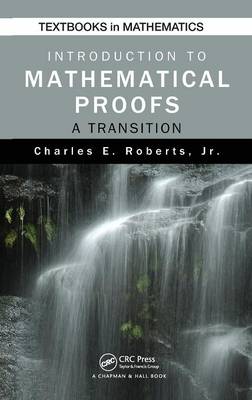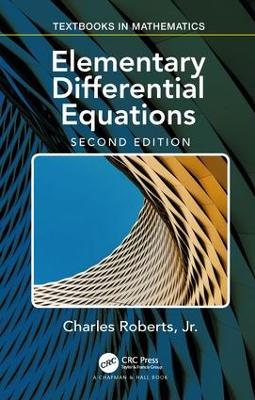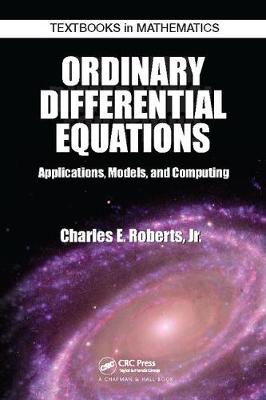Textbooks in Mathematics
4 total works
Shows How to Read & Write Mathematical Proofs
Ideal Foundation for More Advanced Mathematics Courses
Introduction to Mathematical Proofs: A Transition facilitates a smooth transition from courses designed to develop computational skills and problem solving abilities to courses that emphasize theorem proving. It helps students develop the skills necessary to write clear, correct, and concise proofs.
Unlike similar textbooks, this one begins with logic since it is the underlying language of mathematics and the basis of reasoned arguments. The text then discusses deductive mathematical systems and the systems of natural numbers, integers, rational numbers, and real numbers. It also covers elementary topics in set theory, explores various properties of relations and functions, and proves several theorems using induction. The final chapters introduce the concept of cardinalities of sets and the concepts and proofs of real analysis and group theory. In the appendix, the author includes some basic guidelines to follow when writing proofs.
Written in a conversational style, yet maintaining the proper level of mathematical rigor, this accessible book teaches students to reason logically, read proofs critically, and write valid mathematical proofs. It will prepare them to succeed in more advanced mathematics courses, such as abstract algebra and geometry.
Introduction to Mathematical Proofs helps students develop the necessary skills to write clear, correct, and concise proofs.
Unlike similar textbooks, this one begins with logic since it is the underlying language of mathematics and the basis of reasoned arguments. The text then discusses deductive mathematical systems and the systems of natural numbers, integers, rational numbers, and real numbers.
It also covers elementary topics in set theory, explores various properties of relations and functions, and proves several theorems using induction. The final chapters introduce the concept of cardinalities of sets and the concepts and proofs of real analysis and group theory. In the appendix, the author includes some basic guidelines to follow when writing proofs.
This new edition includes more than 125 new exercises in sections titled More Challenging Exercises. Also, numerous examples illustrate in detail how to write proofs and show how to solve problems. These examples can serve as models for students to emulate when solving exercises.
Several biographical sketches and historical comments have been included to enrich and enliven the text. Written in a conversational style, yet maintaining the proper level of mathematical rigor, this accessible book teaches students to reason logically, read proofs critically, and write valid mathematical proofs. It prepares them to succeed in more advanced mathematics courses, such as abstract algebra and analysis.
Elementary Differential Equations, Second Edition is written with the knowledge that there has been a dramatic change in the past century in how solutions to differential equations are calculated. However, the way the topic has been taught in introductory courses has barely changed to reflect these advances, which leaves students at a disadvantage. This second edition has been created to address these changes and help instructors facilitate new teaching methods and the latest tools, which includes computers.
The text is designed to help instructors who want to use computers in their classrooms. It accomplishes this by emphasizing and integrating computers in teaching elementary or ordinary differential equations. Many examples and exercises included in the text require the use of computer software to solve problems. It should be noted that since instructors use their own preferred software, this book has been written to be independent of any specific software package.
Features:
- Focuses on numerical methods and computing to generate solutions
- Features extensive coverage of nonlinear differential equations and nonlinear systems
- Includes software programs to solve problems in the text which are located on the author's website
- Contains a wider variety of non-mathematical models than any competing textbook
This second edition is a valuable, up-to-date tool for instructors teaching courses about differential equations. It serves as an excellent introductory textbook for undergraduate students majoring in applied mathematics, computer science, various engineering disciplines and other sciences. They also will find that the textbook will aide them greatly in their professional careers because of its instructions on how to use computers to solve equations.
In the traditional curriculum, students rarely study nonlinear differential equations and nonlinear systems due to the difficulty or impossibility of computing explicit solutions manually. Although the theory associated with nonlinear systems is advanced, generating a numerical solution with a computer and interpreting that solution are fairly elementary. Bringing the computer into the classroom, Ordinary Differential Equations: Applications, Models, and Computing emphasizes the use of computer software in teaching differential equations.
Providing an even balance between theory, computer solution, and application, the text discusses the theorems and applications of the first-order initial value problem, including learning theory models, population growth models, epidemic models, and chemical reactions. It then examines the theory for n-th order linear differential equations and the Laplace transform and its properties, before addressing several linear differential equations with constant coefficients that arise in physical and electrical systems. The author also presents systems of first-order differential equations as well as linear systems with constant coefficients that arise in physical systems, such as coupled spring-mass systems, pendulum systems, the path of an electron, and mixture problems. The final chapter introduces techniques for determining the behavior of solutions to systems of first-order differential equations without first finding the solutions.
Designed to be independent of any particular software package, the book includes a CD-ROM with the software used to generate the solutions and graphs for the examples. The appendices contain complete instructions for running the software. A solutions manual is available for qualifying instructors.



